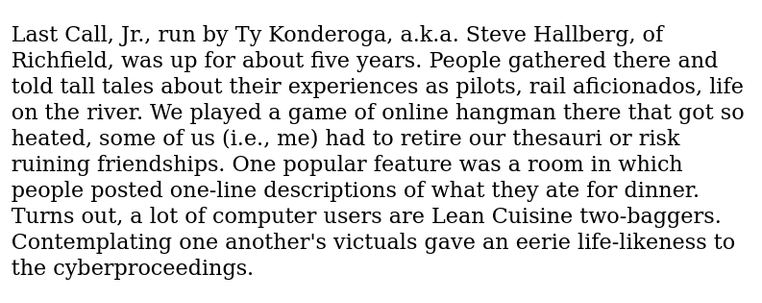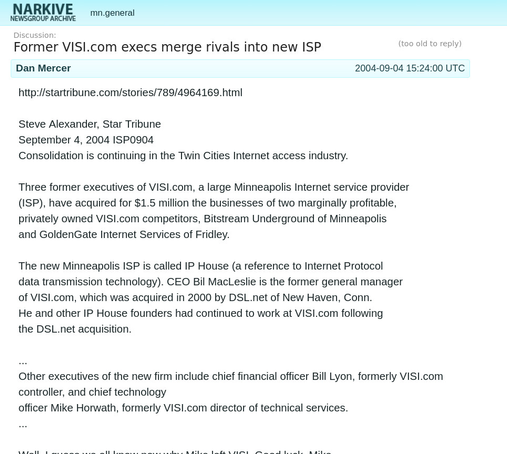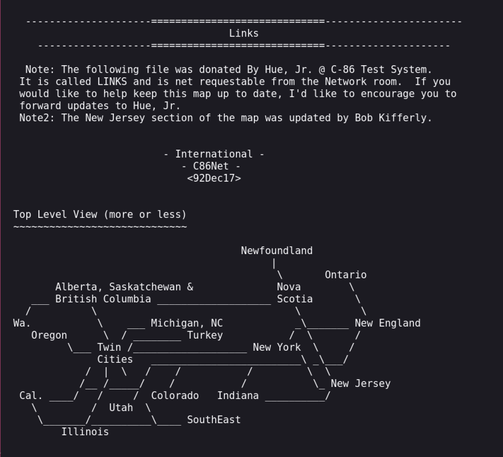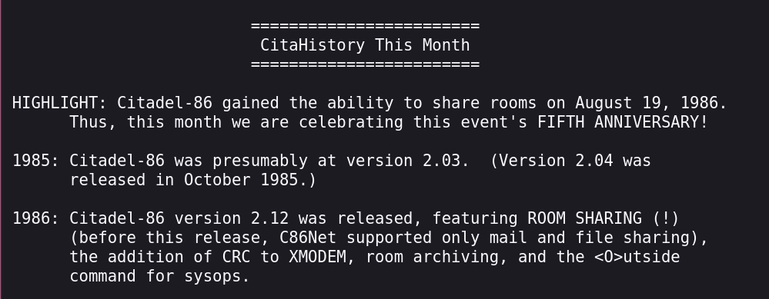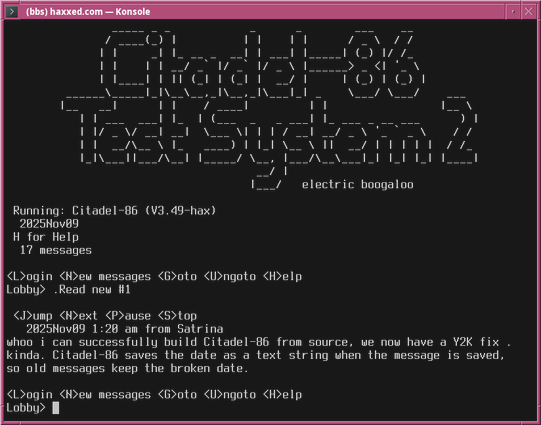https://www.businessinsider.com/ibm-ceo-big-tech-ai-capex-data-center-spending-2025-12 #IBM #DataCenters #DialUp #TechNews #HackerNews #ngated
https://www.businessinsider.com/ibm-ceo-big-tech-ai-capex-data-center-spending-2025-12 #IBM #DataCenters #DialUp #TechNews #HackerNews #ngated
#AskFedi #telecom, #networking, and #dialup nerds:
I have an Adtran Total Access 624 Gen 3 TDM T1 to 24xFXS device. A previous owner, however, installed the ATM (not TDM) firmware on it. It is useless to me in its current condition.
Does anyone have the TDM firmware for this, or have one with the firmware to read off?
I contacted Adtran and they said it went EoL in 2022 and they announced that a year in advance and tough luck.
Feel free to boost for reach. I don't have much hope here.
Писк модема, LAN-пати и облака: как сеть научилась играть
Помните, как звучал модем при подключении? А как тянули витую пару из окна соседу, чтобы поиграть в Quake, а потом спорили, чей пинг меньше: у того, кто подключен напрямую к хабу, или у везунчика с ADSL? Сегодня это кажется древностью. Но именно в те времена, когда интернет был роскошью, а высокий пинг — неотъемлемой частью геймплея, многопользовательские игры стали настоящей лабораторией сетевых технологий. В статье проследим эволюцию сетевого гейминга: от писка модема до облачного рендеринга. И покажем, как каждая эпоха, будь то dial-up, LAN-party или GeForce NOW, формировалась не столько играми, сколько возможностями (или ограничениями) инфраструктуры.
https://habr.com/ru/companies/mclouds/articles/966052/
#игры #сетевые_технологии #сетевое_администрирование #игровой_сервер #модем #dialup #geforce_now #lan #неткод #гейминг
ah yes, before we posted pictures of food we had to simply describe it
i absolutely remember that room
Citadels attracted a mature literate crowd, a clear forerunner to modern twitter-like micro-blogging, that none the less reveled in irrelevant shitposting 😆
from a eulogy for three citadels by Michael Finley of the St. Paul Pioneer Press circa 1996?? now there's something to track down a scan of
https://lwr.wtf/citadel/Newsletters/news9604.html
so there you go, from top of the world in the early 90s, to rapid death around '96 along with the rest of the BBS scene...
as the large for-profit multi-line boards pivoted to full ISP service, the amateur sysops looked at their phone bills and began eyeballing DSL connections instead of second phone lines...
#BBS #Citadel #Citadel86 #Minneapolis #retrocomputing #bbsing #dialup #dialupdays
A few big names even ran Citadels
hometown hero PC Tech Inc ran a Citadel-86 before being absorbed into Zeos/Micron (and still has a Minneapolis office!)
Atari Corp ran a STadel circa 1988!
Bad Sector became Visi.com, a pivotal early Twin Cities ISP, and long since absorbed into god knows what...
#BBS #Citadel #Citadel86 #Minneapolis #retrocomputing #bbsing #dialup #dialupdays
@orc (hi!) famously implemented a UUCP gateway for STadel, bringing usenet groups (and email?) into CitaNet for a time, but got in to a bit of a row with Hue Jr and had left the 612 scene by the time i got online in 1994
a CitaNet overview, from December 1992
the original Test System, run by Hue Jr in Minneapolis was the beating heart of the CitaNet
i often called it as it was a good place to pick up most of the networked rooms 😀
a good ~25 nodes in MN alone
maybe half were still running in `94 and memories are shaking loose of a number of them...
#BBS #Citadel #Citadel86 #Minneapolis #retrocomputing #bbsing #dialup #dialupdays
there's a stash of CitaNews at https://lwr.wtf/wiki/Newsletters
Citadel history thread LETS GO!
been racking my brain trying to remember what all the networked rooms were, here's a list from an amiga board in August 1991
Citadel style BBSs may not have been that popular overall, but they maintained pockets of rabid popularity in a variety of major cities
Citadel-86 gained its own federated networking as early as 1986, (a mere few years after FidoNet began!) quickly becoming a mainstay of many Citadel BBSs
#BBS #Citadel #Citadel86 #Minneapolis #retrocomputing #bbsing #dialup #dialupdays
Citadel-86 v3.49-hax deployed live 🫡
has Y2K fix, removed some pauses waiting for old modems which are not necessary in emulation, and i've got it idling using HLT, which keeps it from burning CPU in VMs new and old, such as a Win95 dos window 😀
connect via ssh to bbs@haxxed.com
#BBS #Citadel #Citadel86 #Minneapolis #retrocomputing #bbsing #dialup #dialupdays
Youtube na linha discada.
https://retropolis.com.br/2025/11/10/youtube-na-linha-discada/
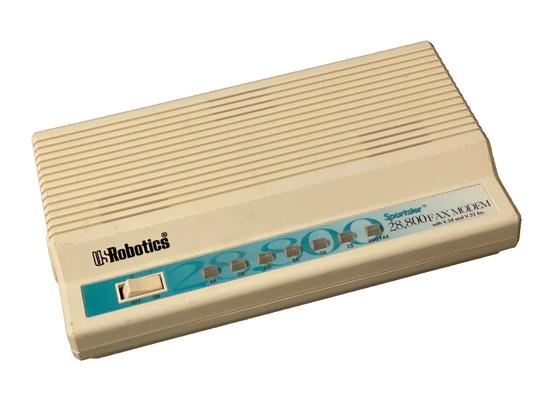
Youtube na linha discada. - Retrópolis
Então, num belo dia, você acordou e disse que queria se ferrar. Ou você estava desgostoso da vida e decidiu fazer algo para sofrer um bocado. Que tal então ver vídeo no Youtube como os antigos fariam, que é usando uma linha discada? Masoquista, eu diria... Mas esses caras provaram que é possível. Então, tem


